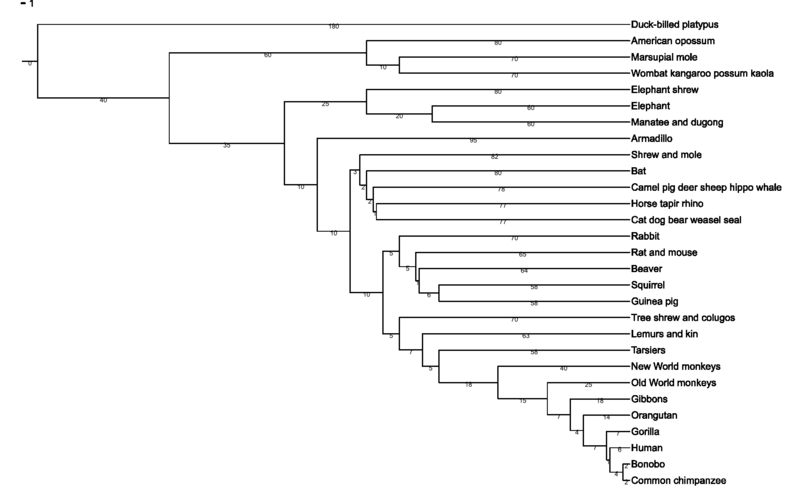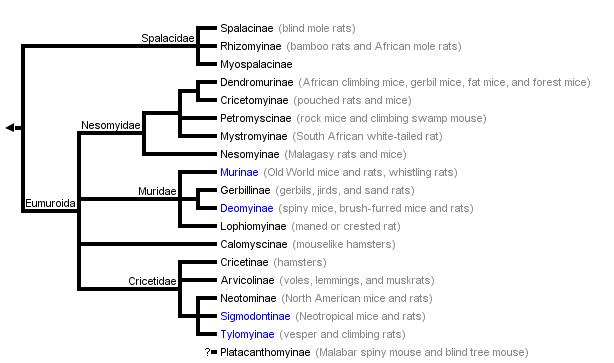
Classification
Complete Taxonomic Classification for Microtus californicus
Domain: Eukarya
To be eukaryotic means that cells must contain a nucleus and other
organelles enclosed in a membrane.
Kingdom: Animalia
Animalia are characterized by being multicellular eukaryotes, with a
mobile phase in at least one stage of their lifetime. Animalia are
also all heterotrophic meaning they must consume other organisms and
digest them in an internal cavity to acquire the energy the need to
function.
Phylum: Chordata
Chordata or Chordates all possess five essential characteristics
that put them in this phylum. These include a notochord, dorsal
nerve chord, pharyngeal slits, an endostyle, and a post-anal tail.
These traits may only be present for a short period of time or the
entire life of a chordate.
Class: Mammalia
Characteristics shared by all mammals include having hair, three
middle ear bones, a neocortex in the brain, a four chambered heart,
and mammary glands in the females. Most mammals have a body plan of
four legs, though some have evolved a specialized body for aquatic
living or flight.
Order: Rodentia
Rodentia have one pair of incisors both on the upper and lower jaw.
These teeth are constantly growing so members of this order gnaw to
keep them short.
Family: Cricetidae
These small mammals range anywhere from 5 cm to 62 cm and can weigh
up to 1,100 grams. The length of tails, color of fur, and habitat
all greatly vary in this family. They are all part of the much
larger superfamily Muroidea.
Genus: Microtus
Microtus refers to a group of voles characterized by small ears.
They have very short legs and tails.
Species: Microtus californicus
The name Microtus californicus is Latin for vole of the northern hemisphere, specifically in California.

Figure 1. Phylogenetic tree of mammalian species as disscussed in
The Ancestor's Tale. M. californicus would be included with
the rats and mice. This tree shows that it is closely related to
beavers, squirrels, guinea pigs, and rabbits. This tree was created
by Fred Hsu in 2007.

Figure 2. This tree was created based on nuclear DNA phylogenies of
Steppan et al. (2004), Jansa and Weksler (2004), and Michaux et al.
(2001) as well as Robinson et al. (1997) and Michaux and Catzeflis
(2000). This shows that the M. californicus, which belongs
to the family Cricetidae, is part of a larger super family know as
the Muroidea.
Next, read about the Habitat of the California Meadow Vole